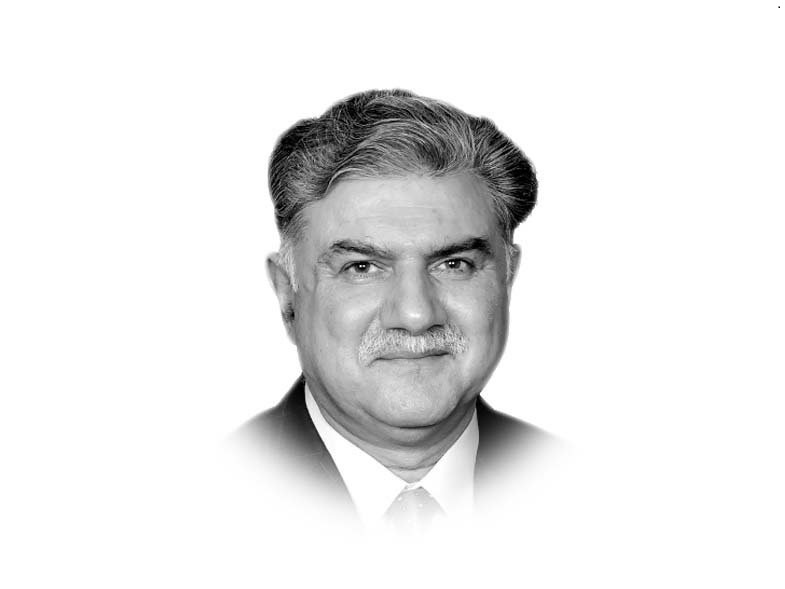
The Soviet Army faced initial setbacks when fighting German offensive in World War-II under the formidable Operation BARBAROSSA (1941-45). However, it was quick to recover and its counter-offensives not only pushed the German forces out of the then Soviet Union, it was able to capture half of Germany in the process.
If Western propaganda is to be believed (there is no independent source left), Russian offensive in Ukraine has gone awry and Russian military is forced to retreat, given the tenacity of Ukrainian resistance, their will to fight and the US/NATO supplied weaponry/war material. An experienced general staff like the Russian Armed Forces would not launch military operations on untenable assumptions, under arduous supply situation and unexpected political situation. President Putin is a seasoned statesman, and one has no reason to believe he had not factored in the international reaction, especially the US/NATO’s indirect involvement in the conflict.
Russia launched the multi-pronged invasion of Ukraine using the launchpads in the north, northeast, east and south of Ukraine on 24 February 2022 after protracted assembly of its forces under frigid conditions, having failed to impose neutrality on Ukraine. Using Black Sea Fleet and some 150,000 ground troops, Russian offensive targeted major Ukrainian cities in missile and artillery barrages after quick and successful SEAD (suppression of enemy air defence) operation. Russian troops invested/tried to invest major cities and marched virtually unopposed towards Kyiv from the north.
Russia’s ‘ostensible’ aim was regime change or ‘regime acquiescence’ in Kyiv, keeping threat of use of ground troops as a last option, as any sane military planner would know the perils of fighting in built-up areas (cities/towns); the superior troops-to-ground ratio it needs due to high attrition, and the time it takes. Possible non-capitulation of Ukraine unlike Georgia (2008) must have been war-gamed and physical occupation of a country as large as Ukraine must have been analysed but dropped, as Russia never had enough forces, irrespective of the Western propaganda. So, except Mariopul, Kherson and northern suburbs of Kyiv, Russian ground troops reportedly did not involve aggressively in combat.
As a curtailed aim to the regime change, logically Russian commanders must have discussed Plan B i.e. extending the Crimean land bridge north of Black Sea incorporating the ports of Mariupol, Odessa extending it further west in the direction of Russian-speaking enclave of Transnistria in Moldova, besides consolidating in the eastern Donbas Region of Ukraine.
In the almost two months of fighting, one has been unable to discern any worthwhile large-scale manoeuvers per se. As of now, in the 25 Ukrainian Oblasts (counties), over 70 cities/towns including the City of Mariupol, Melitopol and Kherson are in Russian hands. Around 13 cities/towns are being contested including Kharkiv. Russian forces north of Kyiv have been repositioned east for attaining the curtailed aim as cited. Ukrainian cities/towns and countryside remain littered with large-scale devastation and carcasses of Russian armour, largely due to ineffectual Russian deployment, and effective use of Stingers/Javelin antitank missiles and Turkish Bayraktar ‘killer’ tactical drones by Ukrainian troops (fighting in small squads), locals militias and foreign legionaries.
Russia has announced its ‘Special Military Operation’ (not invasion) entering a new phase having achieved it main objective, signaling towards the cited scaling back. Russian Colonel General Sergei Rudskoi, the deputy chief of the Russian general staff, is said to declare Russia’s focus on “the main goal, the liberation of Donbas”. In the east/south-east, Russia is already in possession of the Donetsk and Luhansk bridgeheads with Crimea/Sea of Azov protecting its southern flank. Hence this operation is likely to achieve relative success. Terrian favours the attacker. Russia is evidently non-serious in pursuing ceasefire due to its stronger battlefield standing, despite earnest and urgent calling by the US/NATO.
Western officials report death of 7 Russian generals in the War so far, including Lt Gen Yakov Rezanstev, the commander of Russia’s 49th Combined Arms, and Gen Magomed Tushaev of Chechen Special Forces. Russian Army Commander General Vlaislav Yershov was reportedly fired because of heavy Russian casualties.
Russian Forces’ reckless advance and deployment without air cover, its poor coordination, ineffectual tactical/operational communications, poor intelligence and overstretched supply lines are cited as other reasons affecting Russian performance. Western military general staff unanimously points to failure of President Putin’s original aim of decapitating Ukrainian forces in a lightning operation. Some experts cite the apparent disappointment by Russians for not being welcomed as liberators by Ukrainians (and so the lackluster pursuit of operations). However, such iterations betray cold military logic.
On ground, experts believe, Russia seemed to have neglected at least ‘local air superiority’ during critical battles despite deploying over 500 aircraft and a relatively successful initial SEAD operation. Recuperated Ukrainian fighter planes, radars, ground-air systems, landing strips continue to operate. In one instance, elite units were parachuted into (Hostomel) airport without air cover. Long/vulnerable armour columns advancing without air cover resulted in over 500 tanks and more than 300 armoured vehicles destroyed. Armour also seemingly lacked artillery and infantry support during critical urban warfare.
US government estimates that only 50 per cent Russian cruise missile struck their intended targets. Most civilians in/around the Ukrainian city of Bucha were killed by small metal arrows (Fléchettes) in World War-I era cluster shells fired by Russian artillery in anti-personnel role. US/NATO supplied antitank weapons, in Ukrainian hands, by contrast, proved more deadly. Terrain north of Kyiv dotted with rivers and forests was more favourable to Ukrainian defenders, winning the ‘battle of roads’.
It is fair to assume that Russia must have vectored in the anticipated US/European reaction. However, besides the toughest sanctions, the form and format of US military aid to Ukraine might be surprising. Secretaries Austin and Blinken recently announced $713 million in foreign military financing for Ukraine ($322 million for Kyiv) and 15 allied/NATO countries. It is not a donation from US stockpiles, but hard cash enabling these countries to make needed purchases. This is in addition to the $165 million for non-US ammunition, compatible with Ukraine’s Soviet-era weapons. This takes the total American military assistance to $3.7 billion. New artillery guns, including howitzers, are rapidly being transferred to Ukraine, whose military is trained commensurately in neighbouring countries.
Ukrainian civilians in occupied areas reinforced by foreigners are being organised into volunteer militias to resist occupation. The war has caused almost 5.2 million Ukrainians to flee; and internally displaced over 7.7 million people.
More next week.
Published in The Express Tribune, April 28th, 2022.
Like Opinion & Editorial on Facebook, follow @ETOpEd on Twitter to receive all updates on all our daily pieces.




















COMMENTS
Comments are moderated and generally will be posted if they are on-topic and not abusive.
For more information, please see our Comments FAQ